by Kimberly Hill
When you add a texture to the wall, you are practically emphasizing an untold story. It is like creating the innermost personality that comes to life.
And it is one of my favorite ways to get rid of the flaws. Textured walls complement a room more than a plain accent wall. It is neutral yet protects the audience from finding any imperfections.
I have realized that it is not as simple as picking out a color. There are so many options that I once almost ran off the back door for fresh air.
So, here are the 35 types of wall texture choices I have painfully picked out from the rest. The lesser the number, the faster one can decide! Go on!
Contents
There are many ways you can explain what a wall texture is. It is like trying to describe the current feelings in your heart.
However, the simplest form of statement is that it brings out the life slumbering underneath the flat walls. Like a sleeping dragon reverberating into the walls, textures will continue to last for decades.
Do you know what else these textures are given for? They can be the final aesthetic touch of an interior design or the means of covering some minor cracks/holes.
Either way, we all would like to add a texture to our home to impart significance to the walls.
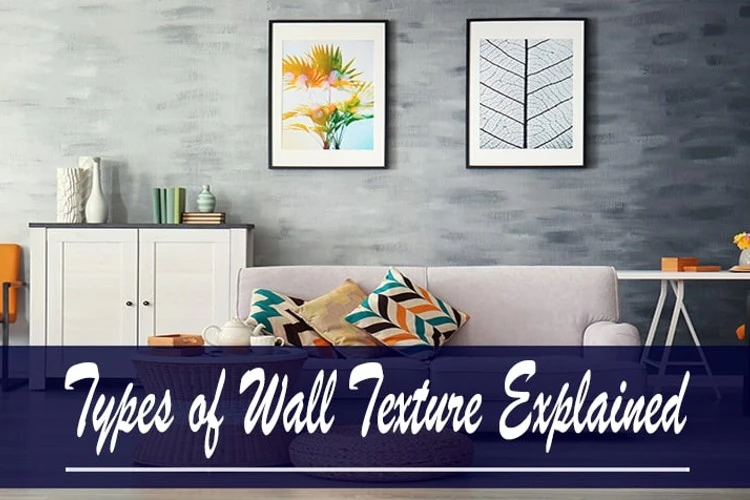
You will find a few common ones and some pretty complex ones that might require a professional’s help. Most importantly, try to grasp which texture feels like it belongs.
Let me begin with the combed texture that any DIY-enthusiast can achieve. It is also a great way for the newbies to attempt something different!
All you will need is the comb trowel or a brush with comb teeth. Apply it to the drywall mud/compound that is already spread onto the wall surface.

Now, whether you like vertical lines as patterns or horizontal is in your hands. However, I find mix-match variation to form geometric results more satisfying.
Provided that you get the tool, the lining pattern is up to your imagination!
Do not go ahead and collect a basket full of real orange peels for this texture! There are easier ways to attain the bumpy style. You will need a spray gun or a roller that has a thicker nap.
I would suggest grabbing the roller, in case you are a beginner. However, a spray gun delivers a better and more prompt outcome. Do not forget to cover the wall with a primer before heading for the drywall compound.
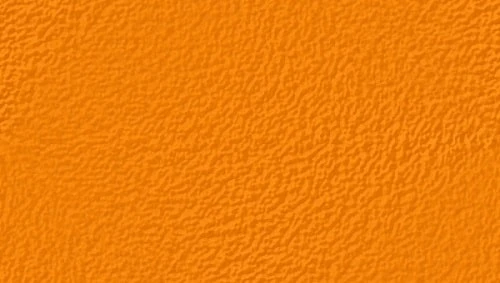
Orange peel texture has been a popular pick for many years. The reason is the simple DIY application process and smooth appearance from a distance. Besides, you can use it for the entire house!
It is yet another popular texture one can stylize using a trowel, spray gun, or roller. The procedure follows after creating the orange peel texture.
Simply use one of the tools to press down the bumps that starkly bloats after halfway through the set. You will notice stalactite-type peaks forming as you keep putting gentle pressure.
Although it results in a heavier feel to touch, it still retains the smoothness from afar like the orange peel.

It is just as you suspect – popcorn texture in white paint clearly gives off a hungry vibe! However, it is still a favorite among many interior designers.
I find this texture a reminiscence of a 60s theme that offers a timeless flair in any generation. Plus, it dampens the noise – a perfect choice for musicians or bed/living rooms.
The user will have to mix polystyrene and Styrofoam with the drywall mud to get this texture.
Remember that it is almost permanent. So be 100% sure before going for this style.
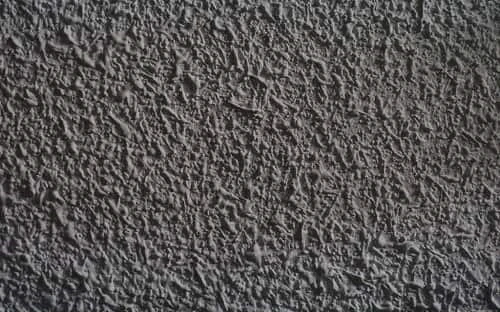
The obvious ingredient to get this texture is sand. Mix it with primer and leave it for the whole night.
Sand swirl is somewhere between a comb and spray-sand texture. However, you should use a thick-bristled or a traditional paintbrush for the purpose.
Now, let your hand take over the swirling patterns of your choice.
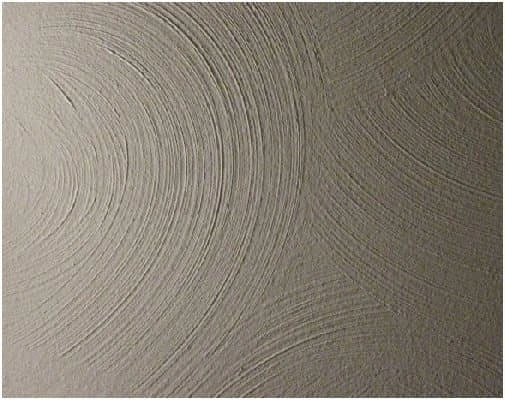
Applying mud swirl texture is practically the same as sand swirl. The only difference is that it contains no sand.
You should plan ahead a swirling pattern as you prepare the drywall compound.
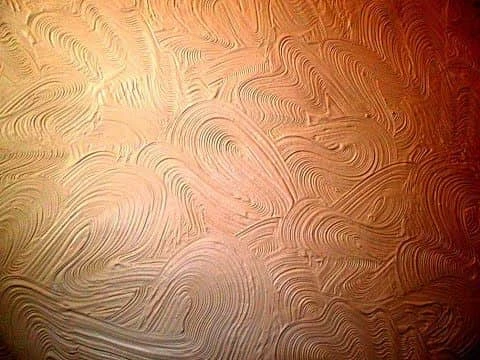
The Santa Fe texture comprises two layers even though it is surprisingly low profile. Now, the first layer is the overall coating on the surface with drywall mud. You do this by pressing the trowel.
Next, the second layer covers the majority of the space using a large curved knife and more mud. The point is to emphasize the second layer more, or else it becomes a skip-trowel texture.
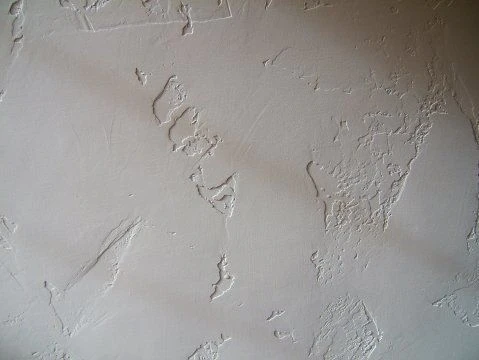
You will require a skip trowel tool to add this textured layer to the wall surface. Once the mud is applied, you will have to use a curved knife to spread the mixture while forming overlapping patterns.
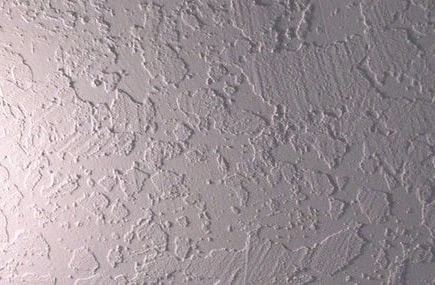
The first rule is to apply the mud with a hand. As exhausting as it might sound, the artistic effect is worth the time and effort.
This effect follows the same process as skip trowel texture. The only distinction is the thicker material application with the trowel so that the texture is more accentuated when overlapped.
These are the tools that assist you in finishing touches on the walls. You place the compound on a hawk while scrapping a little bit of the mixture with a trowel.
The trick is to apply the trowel on the wall surface quickly. The motion should be fast enough to create a flat and widespread compound without dropping anything on the floor.
It might sound difficult, but once you get the hang of it, you will find it easy to work rhythmically.
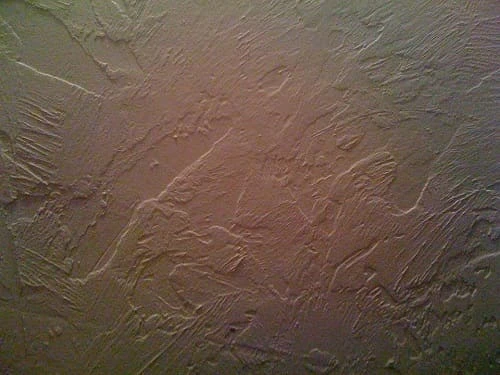
Take a round brush that incorporates long bristles to create stomp textures. Just push the material upwards that you have applied beforehand – that is all!
To achieve a rosebud texture, you will have to lighten the mud consistency to a liquid form. Then, apply the material using a brush specifically designed for this style.
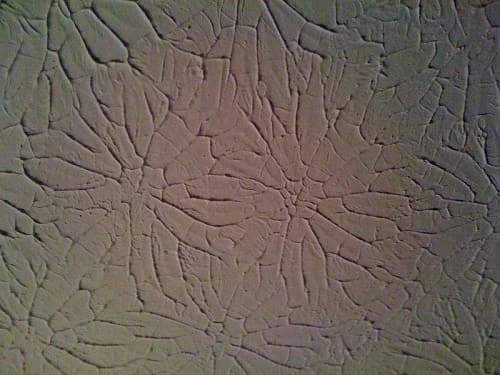
It is the stomping patterns by the brush that creates rosebud texture. You can consider this for an accent wall or ceiling to complement flattened walls. Try to make it more precise, so each stomp/slap offers a resemblance to rose blooms.
It is a texture that brings out the artistic character of the person. The style can be an accent, ceiling, or hallways phenomenon that increases dimensions to the home.
Venetian finish includes marble dust with the compound that you apply using a spatula. The layer should be thin and often collide with multiple laps.
It is a high-end texturizing that refines an ancient finish to the modern interior.

If you wish to cover any imperfection and also reveal a unique look, slap brush texture is the way to accomplish it.
You simply have to add the drywall mud layer and let the slapping brush be in charge. Furthermore, you can stamp, twist, sweep, or shake to mark your signature design.
The texture may vary based on the brush type and how you carry out the slapping task.
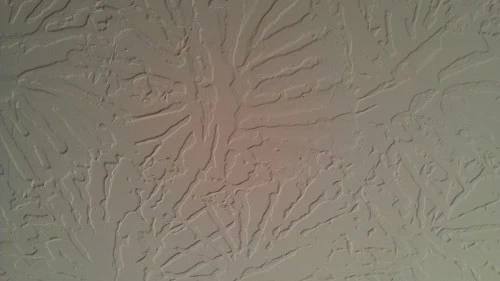
The name might give off a creepy vibe, but the texturing design is a modern craze that many love. It is correspondinthick gly close to the stomping brush, meaning the stiff-bristled brush is the secret to this texture.
Simply ready the drywall mud and keep pushing the application upwards with the brush. Overlapping is pretty important here.
Despite its high demands, the grooves formed due to the technique tends to gather dust over time.
This texture reminds me of a dragon’s den that has gray slated texture horizontally. You are going to require a drywall compound of thick consistency to coat the surface.
Then, take a thin brush or the trowel edge to press lines after lines in irregular forms to achieve the look. However, you can give the texture a profound character by adhering slate stones to the cemented wall.
It is exactly how it sounds to you. Just mix the sand to the primer like in the sand swirl texture and fill in the spray gun. Now, spray on the ceiling or the walls to get that rough look!
Remember, you can add the sand with water or mud as well. The consistency should be light, is all.
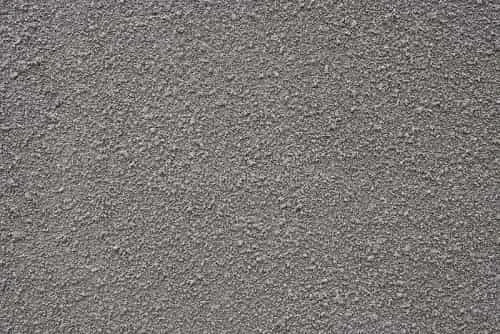
Do you have any old lace tucked in the drawer? Make that to valuable use! You can attach it to the roller and get to work.
However, I suggest you use lace textured rollers found in the market for a deeper setup. You will find various types of designs to go with the walls.
Maybe you do not wish for any diverse texture to isolate the accent wall or ceilings. It is never too late to find the originality. Or, if you want to spare a few walls from stomps, swirls, and slaps, smoothen the wall with a simple roller.
Keep in mind that it is entirely different to transform a textured wall into a smoother one. The material consistency should always be pancake batter-like. Still, there will always be slight remnants of the previous texture underneath.
Of course, you can create your own canvas by allowing various colors to adorn the walls. What is more, each room will present unique air as long as you select the right colors.
Try roller lace overlaps with a drying duration between each coat if you do not like blending the shades.
Here, you simply have to make sure the drywall compound has a thick consistency. This texture is pretty much like impasto painting, where the artwork produces a stunning effect.
You can apply such a technique on the wall as well. Make sure you are well practiced, or the thickness will not stand out.
If your mind runs wild with abstract imagination, this choice is ideal for a wall-sized artwork as an accent.
Unless you are experienced in sculpting, I suggest you seek an expert’s help for the texture. It involves making desired figures/objects in the 3D form on the flat wall surface.
Now, the purpose is to construct shadows under lighting effect while producing the incredibly accentuated presentation. It will feel as if the figure itself is independent of the wall, almost alive!
The main material used here is plaster that has become more versatile and popular these days. There are other methods to produce bas-relief, but for now, plaster works great.
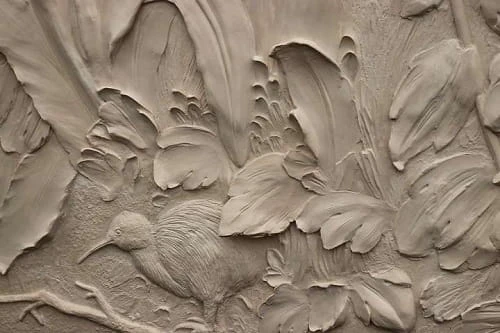
You will find this technique a breeze and very enjoyable to work with, especially with a partner. You attain this effect using a brush that contains outstretched, long bristles.
You hold the brush and press it straight into the wet drywall mud and pull out right away. Keep dabbing it in this manner to have that stomping texture fully.
If you wish to accomplish a texture within budget and all by yourself, Monterrey Drag gives you the opportunity. Once again, you will require a spray gun to apply the formula to the drywall.
Let the work dry for about fifteen minutes. Use a trowel to drag the over the sprayed compound to form a flatter pattern. Many experts advise wiping the trowel blade before continuing to the next drag.
Creating wall cladding to form architectural panels is time-consuming. However, the outcome is worth all the sweats shed.
Just make sure you select the right material for cladding an accent wall. Architectural panels are a texture that does not go well when applied in the whole room.

You can even create some of these textures by applying a thick coating of drywall mud on the wall surface. Then, using a proper tool or a trowel, you will have to work on the pattern you had in mind.
Since there are multitudes of architectural textures you can select from, I suggest going easy if this is your first time.
There is always a shortcut to the difficult patterns. Textured wallpapers are somewhat similar to the architectural panels. You can accent the wall, the staircase section, or any part of any room in the house.
It brings out the personality of the interior with a deeper connection. So, you must choose a proper wallpaper for the wall to complement your style.
These wallpapersare a great way to cover any imperfection caused during renovation. The raised features (textures) offer further highlights as the lighting effects create shadows.
Of course, you can paint over the wallpapers to match the room décor.
Before you get Tuscan wall texture, you have to know that it is widely preferable with warm colors.
The first step is to apply the base coat. It should have a neutral color and be in latex satin. Let it dry for a day. If you wish to add deeper texture to the wall, adding a joint compound will do the trick.
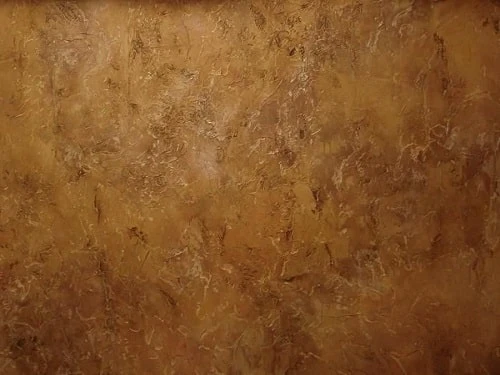
Make sure to mix it thoroughly with semi-thick consistency. Now, paint all over the wall with the mixture and let it dry again. Apply a second coating with the roller.
It is a two-person job as the second step requires one person to paint while the other creates patterns on the wet application with a brush.
The right-angled wall textures are quite intricate to make without the help of a skilled person. One might need various paneling or cladding to achieve this type of texture to form an accent wall.
You can consider these designs as geometrical since the name gives it away! Right-angled patterns can come in varieties of shapes. Hence, I advise that you do not apply it to the four walls of a room.
It might feel a bit stuffy in that sense. However, accentuating it on a single wall can release the crammed weight off the room.
You usually make a shiplap wall by interlocking the wooden boards tightly with one another. These panels are highly popular to get that rustic yet modern style at home.
However, many might find it expensive to renovate the house using these wooden panels. So that is where the shiplap texture comes into view using drywall compound.
All you have to do is ascertain the consistency is thick enough to coat the wall without dripping. Once it sets for about fifteen minutes, use a long trowel edge to imitate the panel edge patterns.
It takes time but the overall effect – whether by drywall or wooden boards – will always remain in style.
You can either create a faux brick texture from scratch or scuff roughly over the existing one. Both options will deliver an aesthetic café-like environment to the room.
The best and easiest way to achieve this texture is by getting the faux brick panels. But first, do not forget to measure the wall beforehand.
Once you glue the wall and nail the panels, it is time for you to decide if you wish to scuff the surface or leave it for a natural look.
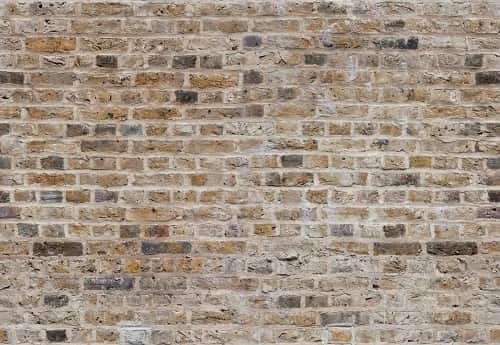
This type of texture is often favored in the kitchen or washroom area. Yet, the various tiled sizes, designs, and patterns can make them a stunning choice for other rooms as well.
You can either create small polygonal raised texture or squared shapes that fill a large area. The edges can match each other or even create a random pattern – it is up to you.
Textured walls can be made using anything that delivers uniqueness. Using cardboard pieces instead of a trowel is also another trick that never grows old.
But I am here to tell you about the texture of this board on the wall. You can achieve the living-in-a-cardboard vibe by purchasing such panels. Of course, you should not exaggerate the design and limit it to accenting a wall only.
When you consider giving your wall a scarred look, you are actually offering it a striking feature. This texture is all about orange peel, swirls, and slap brush technique. You can add a few more to give it a grudging look.
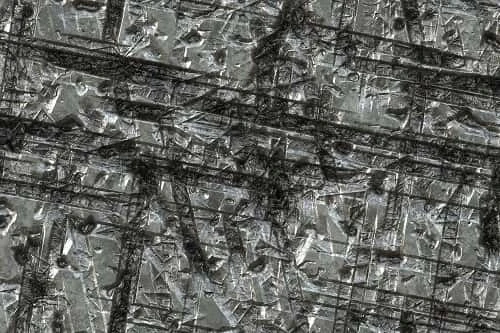
The drywall mud consistency should not be too liquidy to get this effect.
To get the subtle texture on the wall, you will have to dilute the drywall mud in a paint consistency. Simply cover the surface with a roller, and that is all! The trick is to make it as delicate as possible with overlapped patterns for a better result.
Who does not love a striped textured accent wall by the dining or living room? In fact, this effect produces a fashionable interest in the interior without working too hard.
You can start off with a glazing base coat as randomly as possible. Applying a layer of quartz stone with a roller beautifies the next step further. Do this vertically without any overlaps.
Finally, get your wallpaper brush with long bristles to drag long lines onto the layer. Give a vertical swipe from top to bottom for continual strokes.

Well, that was quite the journey! Are you ready to make up your mind yet? You can categorize these options into two difficulty levels – easy and complicated.
It will help you discover how to approach the preferred choices. In any case, my verdict among the 35 types of wall texture ideas is Shiplap Texture and Striped Texture. You can do them by yourself if you like.
The Bas-Relief Drywall Finish and Architectural Panels are also right next to the paragon designs if you like something modern but daring. My personal favorite is the Venetian Drywall Finish that projects a unique flair to the interior.
Anyhow, you have to admit that each style complies a remarkable character when applied in the right interior. Let’s hope your creative mind finds the one you truly seek.

About Kimberly Hill
Now it is just me, Kimberly Hill living in New York city, N.Y.
Loves to blog about various aspects of life that matter most.
Received the BA degree in Art History from Stanford University of California.
 |
 |
 |
 |